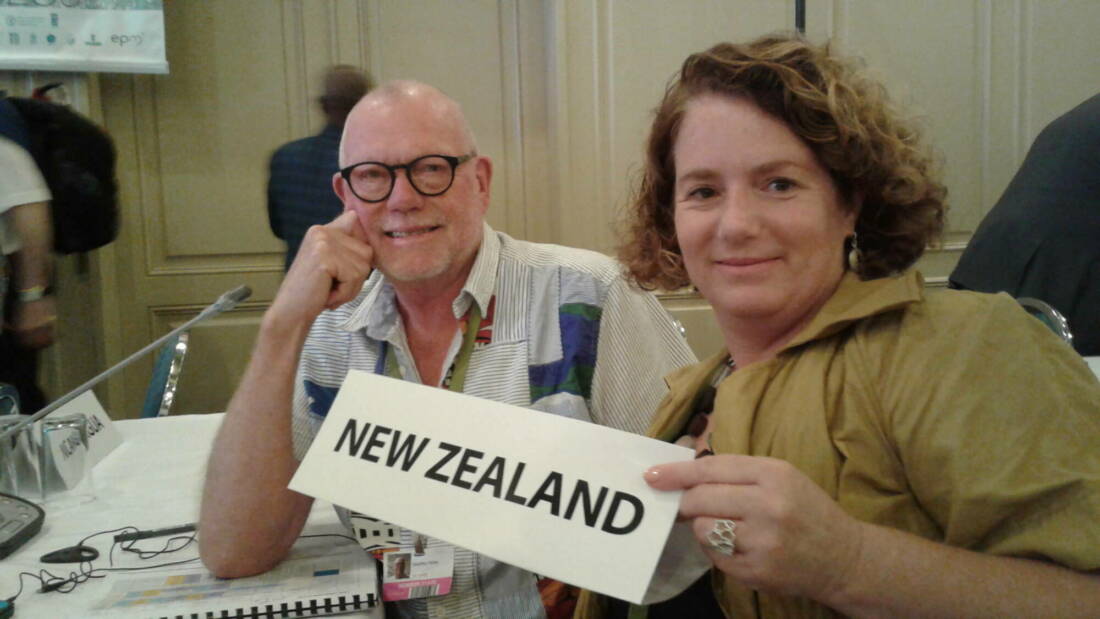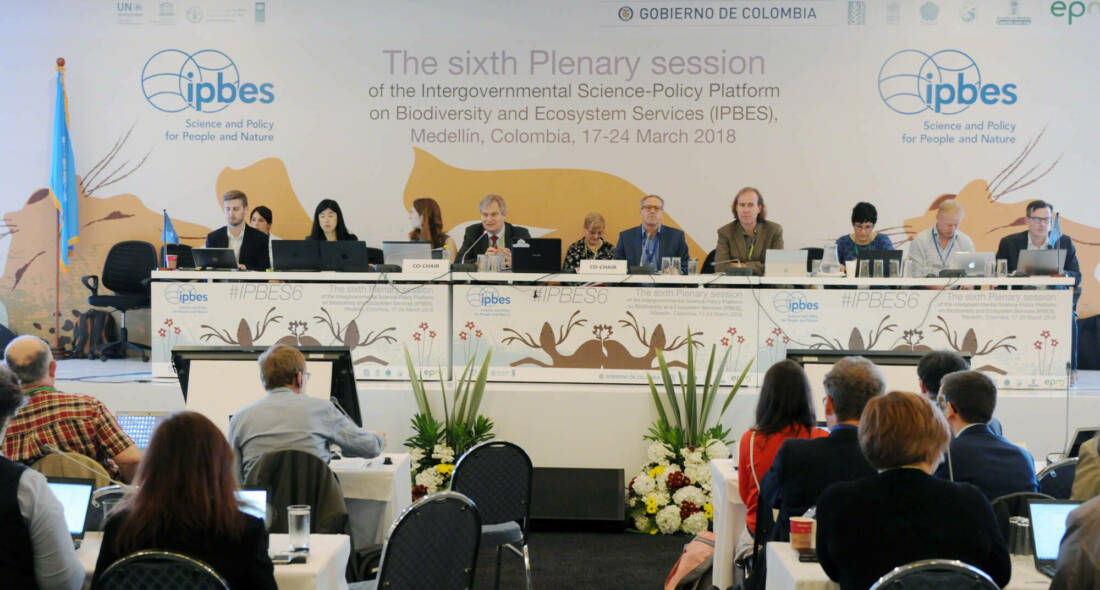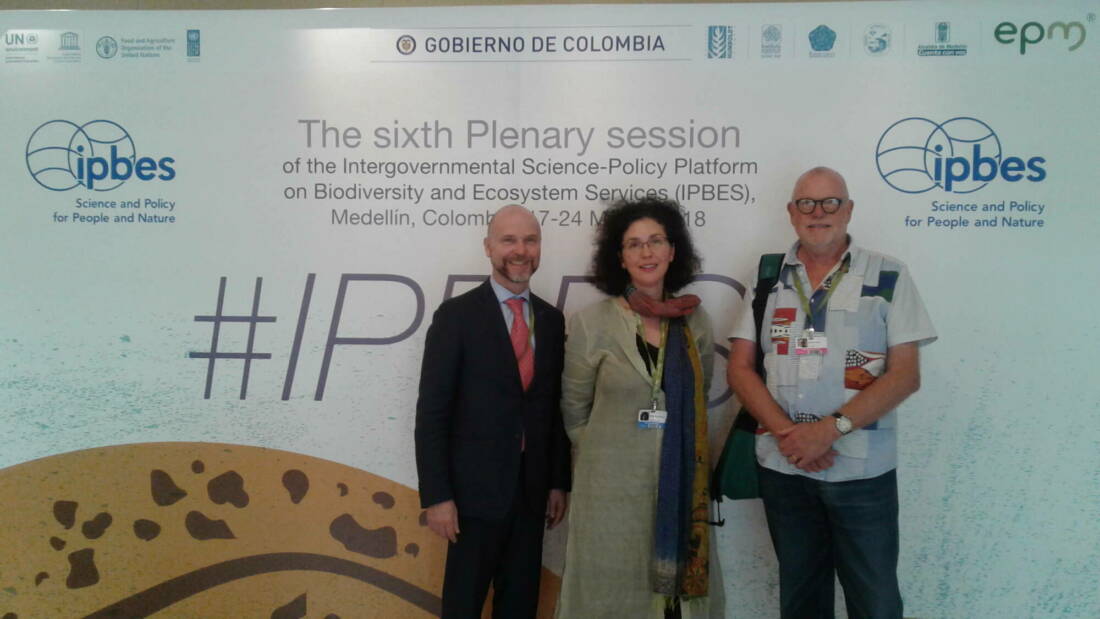International science plenary explores ways to halt biodiversity decline.
Biodiversity – the essential variety of life forms on Earth – continues to decline in every region of the world, significantly reducing nature’s capacity to contribute to people’s wellbeing. This alarming trend endangers economies, livelihoods, food security and the quality of life of people everywhere, according to four landmark regional science reports released at the 6th Plenary of the Intergovernmental science-policy Platform on Biodiversity and Ecosystem Services (IPBES) in Medellin, Colombia in March.
Biodiversity and Ecosystem Services
The New Zealand National Commission for UNESCO provided funding for Dr Geoff Hicks to participate as an expert advisor to the New Zealand delegation at the plenary.
“The Platform was in good heart as the reports provide a strong knowledge base for global action,” says Dr Hicks. “There was also a sense of urgency and cohesion amongst the 129 nations represented to get stuck in and implement the findings.”

The science reports that were released at the plenary, written by more than 550 leading experts from over 100 countries, is the result of three years of work. The four regional assessments of biodiversity and ecosystem services cover the Americas, Asia and the Pacific, Africa, as well as Europe and Central Asia – the entire planet except the poles and the open oceans. IPBES also released an assessment report on land degradation and restoration.
The regional assessments focus on providing answers to key questions for each of the four regions, including: why is biodiversity important, where are we making progress, what are the main threats and opportunities for biodiversity and how can we adjust our policies and institutions for a more sustainable future? They confirm that continued biodiversity decline seriously jeopardises the chances of any region to meet the Sustainable Development Goals (SDGs), and highlight existing policy options that can reverse the trend.
The Asia-Pacific region’s report says that although there has been an overall decline in biodiversity there have also been some important biodiversity successes including, for example, increases in protected areas. Over the past 25 years, marine protected areas in the region increased by almost 14% and terrestrial protected area increased by 0.3%. Forest cover increased by 2.5%, with the highest increases in North East Asia (22.9%) and by South Asia (5.8%).
There are concerns, however, that these efforts are insufficient to halt the loss of biodiversity and the decline in the value of nature’s contributions to people in the region. Unsustainable aquaculture practices, overfishing and destructive harvesting, threaten coastal and marine ecosystems, with projections that, if current fishing practices continue, there will be no exploitable fish stocks in the region by 2048. Intertidal zones are also rapidly deteriorating due to human activities, with coral reefs of critical ecological, cultural and economic importance, already under serious threat, and some reefs having already been lost, especially in South and South-East Asia. According to the report, up to 90% of corals will suffer severe degradation by 2050, even under conservative climate change scenarios.
The report emphasises that climate change and associated extreme events pose great threats, especially to coastal ecosystems, low-lying coastal areas and islands. Climate change is also impacting species distributions, population sizes, and the timing of reproduction and migration. Increased frequencies of pest and disease outbreaks resulting from these changes may have additional negative effects on agricultural production and human wellbeing, with impacts projected to worsen.
Forests, alpine ecosystems, inland freshwater and wetlands, as well as coastal systems are identified as the most threatened Asia-Pacific ecosystems. The increasing variety and abundance of invasive alien species is highlighted as one of the region’s most serious drivers of ecosystem change and biodiversity loss.
Accompanying the stark concerns of the IPBES experts, however, are messages of hope: promising policy options do exist and have been found to work in protecting and restoring biodiversity and nature’s contributions to people, where they have been effectively applied.

For Asia and the Pacific, the IPBES experts point to the success of countries that achieved rapid economic growth in gradually restoring and expanding protected areas – especially forests. They emphasise that, while assisting these countries in their efforts to meet some of the SDGs and Aichi Targets, this alone will not be sufficient to reduce biodiversity loss caused by the negative impacts of monoculture. For instance, the region registered a growth of 0.3% in terrestrial protected areas and 13.8% in marine protected areas – putting many countries on track to meet Aichi Target 11 – but most of the important bird areas and key biodiversity areas remain unprotected.
Speaking about the policy options emerging from the four regional assessments, Chair of IPBES Sir Robert Watson said: “Although there are no ‘silver bullets’ or ‘one-size-fits all’ answers, the best options in all four regional assessments are found in better governance, integrating biodiversity concerns into sectoral policies and practices (e.g. agriculture and energy), the application of scientific knowledge and technology, increased awareness and behavioural changes.”
“It is also clear that indigenous and local knowledge can be an invaluable asset, and biodiversity issues need to receive much higher priority in policy making and development planning at every level. Cross-border collaboration is also essential, given that biodiversity challenges recognise no national boundaries.”
“Biodiversity is the living fabric of our planet – the source of our present and our future,” said Audrey Azoulay, Director-General of UNESCO, in response to the report. “It is essential to helping us all adapt to the changes we face over the coming years. UNESCO, both as a UN partner of IPBES and as the host of the IPBES Technical Support Unit on Indigenous and Local Knowledge, has always been committed to supporting harmony between people and nature through its programmes and networks. These four regional reports are critical to understanding the role of human activities in biodiversity loss and its conservation, and our capacity to collectively implementing solutions to address the challenges ahead.”
IPBES has an agreed budget to carry out the next round of assessments which will continue to build on understanding the plight of biodiversity across the planet. The new reports will be initiated in Paris in 2018. Dr Hicks advises that three new New Zealand experts have been identified who will be able to contribute to the report and grow New Zealand’s capacity in this area.
“For me personally, I feel a fantastic sense of achievement,” says Dr Hicks. “I’ve led the New Zealand delegation since IPBES was established in 2012 and I can now step back knowing we’re in good shape.”

About IPBES
Often described as the “IPCC for biodiversity” IPBES is an independent intergovernmental body comprising 129 member Governments. Established by governments in 2012, it provides policymakers with objective scientific assessments about the state of knowledge regarding the planet’s biodiversity, ecosystems and the contributions they make to people, as well as the tools and methods to protect and sustainably use these vital natural assets. For more information about IPBES and its assessments visit www.ipbes.net. “For me personally , I feel a fantastic sense of achievement,” says Dr Hicks. “I’ve led the New Zealand delegation since IPBES was established in 2012 and I can now step back knowing we’re in good shape.”
